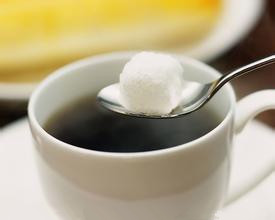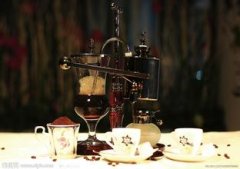The skills of handmade coffee brewing basic knowledge of coffee

Filters can be divided into:
Filter cup type: Japanese handmade coffee (Japanese hand brewing) is the most.
Filter bag type: Italian bag-type coffee is the most.
Professional grinding: Japanese handmade coffee should be ground 1.5--2 grams best.
Coffee Bean Weight Comparison Table:
A person: 15 grams--20 grams or so
For two: 30 g--35 g
Three servings: 45 g--50 g
Four servings: 60 g--65 g
5 servings: 70 g--75 g
[Experience]:
Coffee powder has many aromatic ingredients, but there are also many bitter and unpleasant substances. Many people have the stereotype that coffee is bitter. In fact, coffee is not bitter except for the coffee beans themselves, or after deep roasting: if brewing coffee that is not bitter in nature still feels bitter, it is likely that in addition to extracting the aromatic components of the coffee beans, it also extracts unpleasant bitter components.
The so-called (extraction) actually refers to the dissolution of various ingredients in coffee powder by water. The extraction rate refers to the ratio of the aromatic components in the coffee powder to be dissolved by water. When the more aromatic components are dissolved, the higher the extraction rate, and vice versa.
Try to recall the experience of making tea: when making tea, it is often the second bubble that is the sweetest, but after the second bubble, the tea soup gradually appears tasteless. Because there is a certain proportion of aromatic sweet ingredients in tea for extraction, when all these sweet ingredients have been extracted, and then poured into hot water, tea soup appears tasteless. If you can completely extract the aromatic and sweet components of tea without extracting other bitter and tasteless substances, you have achieved the best extraction rate.
Like tea, coffee also has the best extraction rate, but tea leaves can be brewed several times, while coffee powder can only be brewed once: tea leaves if over-brewed, will only be more tasteless, and coffee if over-extracted, in addition to bitter, throat will also feel dry, just desperately want to find water to dilute.
But Italian coffee is different, because ESPRESSO is covered with a layer of crema (CREMA), we can judge from the appearance of crema color, thickness, spots and so on what kind of problems this cup of coffee may hide, and improve in the next brewing process.
The extraction rate of artisanal coffee is the key: it effectively extracts the coffee essence we need and isolates the bitterness and burnt taste we don't like!
Of course, the production process is also very critical! In particular, the control of the amount of water should not be more or less, the production process should be fine and uniform and uninterrupted!
This way out of the handmade coffee it's: sweet, sour, bitter. alcohol and fragrance can only be brought into full play!
It takes a 5-10 year brewing veteran to brew a cup of artisanal coffee that tastes so good.
[School Content]
Step1: Introduction to household manual coffee appliances: siphon pot, mocha pot, French filter pot, drip pot, four kinds of household handmade coffee making appliances, coffee beans and coffee pot can be used to make different flavors of coffee, which is your choice?
Step 2: Coffee bean selection: Sumatra's mantinin, St. Augustine's Colombia, Harald's ground card... coffee beans bitter, fragrant, alcohol, sweet, acid, which characteristics are your tongue taste, is it your coffee?
Step3: Milk foam production: milk foam and coffee as coffee and coffee pot, how to manually make fine milk foam?
Step4: How to taste a good cup of coffee: taste coffee sour, bitter, sweet or is burnt, astringent is a taste bud challenge
Meditate in the cafe, read and write in the cafe, share the joy and sadness of life with friends in the cafe, experience the atmosphere and culture of a strange city in the cafe, feel the rhythm of everyone in the same space and the story that may be hidden behind it in the cafe, and think and power through a cup of hot coffee.
If we don't have time for coffee, learn to brew a good cup of coffee for ourselves in our kitchen before work, on weekends, or after leisure.
Important Notice :
前街咖啡 FrontStreet Coffee has moved to new addredd:
FrontStreet Coffee Address: 315,Donghua East Road,GuangZhou
Tel:020 38364473
- Prev

Introduction to the steps and materials for making 25 kinds of coffee 3
16 Turkish coffee (Turk Kahvesi) there is a saying: drink your cup of Turkish coffee, remember your friendship for forty years. In the streets and alleys of Turkey, there are shops with coffee signs, some with a small coffee cup painted, and the edge of the cup seems to be steaming. After drinking coffee, Turks always look at the traces of coffee powder at the bottom of the coffee cup.
- Next

Coffee ingredients caffeine tannic acid fat
Caffeine is the most eye-catching of all the ingredients of coffee. It belongs to a kind of phytoxanthin (animal muscle component). It has the same properties as theobromine contained in cocoa, green tea contains the same theophylline, and the percentage of reduction after baking is very small. Caffeine has a very wide range of effects. will affect the human brain, heart, blood vessels, gastrointestinal, muscle and kidney and other parts, the right amount of coffee
Related
- Beginners will see the "Coffee pull flower" guide!
- What is the difference between ice blog purified milk and ordinary milk coffee?
- Why is the Philippines the largest producer of crops in Liberia?
- For coffee extraction, should the fine powder be retained?
- How does extracted espresso fill pressed powder? How much strength does it take to press the powder?
- How to make jasmine cold extract coffee? Is the jasmine + latte good?
- Will this little toy really make the coffee taste better? How does Lily Drip affect coffee extraction?
- Will the action of slapping the filter cup also affect coffee extraction?
- What's the difference between powder-to-water ratio and powder-to-liquid ratio?
- What is the Ethiopian local species? What does it have to do with Heirloom native species?

